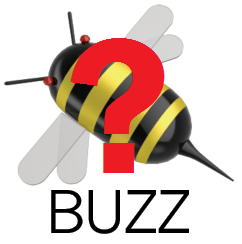Sure, let’s just use our most challenged schools as your beta testers. That’s a great idea.
NOTE: My reporting on the Education Achievement Authority involves multiple posts. You can read all of my coverage of the EAA by clicking HERE.
 The other day, I wrote an editorial piece in which I came up with a partial list of the “absolutely of course that’s obvious no need to discuss it” sorts of things that you would want a school district trying to turn around the worst schools in Detroit to have. One of those things was “Equip the schools with the most cutting edge education technology”.
The other day, I wrote an editorial piece in which I came up with a partial list of the “absolutely of course that’s obvious no need to discuss it” sorts of things that you would want a school district trying to turn around the worst schools in Detroit to have. One of those things was “Equip the schools with the most cutting edge education technology”.
In the course of reporting on the tragic situation in Michigan’s Education Achievement Authority (read all of my posts HERE), one of the things that I have learned is that the computer platform that is used to administer the EEA’s “student centered learning” model — known as BUZZ — is hated nearly across the board by teachers and students alike.
Instead of being a model for implementing a computer-based teaching model, BUZZ crashed regularly, had major content deficiencies, and was so hard to use that its benefits were all but overwhelmed by its flaws.
Here some of the things I’ve been told in my reporting:
I’ve almost refused to teach with Buzz, their online teaching platform. It doesn’t work half the time. But we’re required to use it or we’ll be given an ‘ineffective’ score even if the data shows that we ARE being effective.
It’s very clunky. It wasn’t up and running until half-way through the school year last year and it crashes all the time. It’s only gotten slightly better this year.
Buzz…is an empty shell other than some videos and tests
A former EAA teacher told me privately:
Once teachers last year started complaining that the content already provided on Buzz was inadequate, [EAA Chief Officer, Equity, Innovation, and Accountability Dr. Mary] Esselman paid several teachers $25/hour to find and upload content outside of working hours (if they did it during prep hours or during the regular school day, they weren’t paid). Keep in mind that many of the teachers in the EAA are Teach for America teachers and therefore had zero experience with or training on curriculum.
What seems very clear from these accounts is that this is not user-friendly software by any fare stretch of the imagination. A little digging shows why: The EAA was the field testing operation for BUZZ which is a product of Agilix. In other words, it had never been used anywhere else; it was unproven, untested software and the students & teachers of the EAA were the beta testers.
OREM, UT, December 6, 2012 — Agilix today introduced Agilix Buzz, the first competence-based, personalized learning application that is both scalable and fiscally viable. Buzz is immediately available on Google Chromebook laptop computers and through the Google Chrome Web Store. Other partnerships and availability channels will be announced in coming weeks.Buzz is a creation of Agilix, built by the company’s ideaworks professional services division — in partnership with the School Improvement Network, Compass Learning, and other partners. It grew out of a need in the Education Achievement Authority (EAA) of Michigan for a radically new, student-centered personalized approach to learning. […]
In 2011, Chancellor John “Doc” Covington and Dr. Mary Esselman were given the opportunity to change education as we know it. Starting with 15 of the lowest performing schools in Detroit serving more than 10,000 students – with plans to extend to 100 schools serving 100,000 students across Michigan – they needed to change the system that had failed these students for years. Incremental improvement was not an option – a complete shift was necessary to maximize the potential of each and every student in those 100 schools.
So, once again, we have proof that, instead of investing the resources necessary to accomplish the goal of turning around our worst-performing schools as quickly as possible, the EAA operated on the cheap, using an untested, unproven, beta stage software platform with the teachers and students the beta testing guinea pigs.
The results of that particular experiment — an obviously failed experiment — are, of course, abundantly clear.
Stay tuned. I have at least three more teachers and former teachers lined up to share their accounts over the next few days.
P.S. Agilix’s claim that the EAA plans to expand to 100 schools is news to those of us paying attention. Even Chancellor Covington only anticipated 60 schools when he applied for federal grants.
P.P.S. The EAA paid $135,753.50 in lobbying fees last year. Think of the software they could have bought with that if they hadn’t spent it on things like trying to get the EAA expanded statewide.
P.P.P.S I went through the EAA’s check registry which is available in three different pdf files HERE. I could not find a single check written to Agilix. I suppose it’s possible the EAA paid for it with a check to a different company but it has me wondering: did they get the BUZZ software for free in exchange for doing their field testing for Agilix and letting the teachers and students of the EAA work out the kinks and problems with the software before they went commerical with it?
Sorta looks that way…



